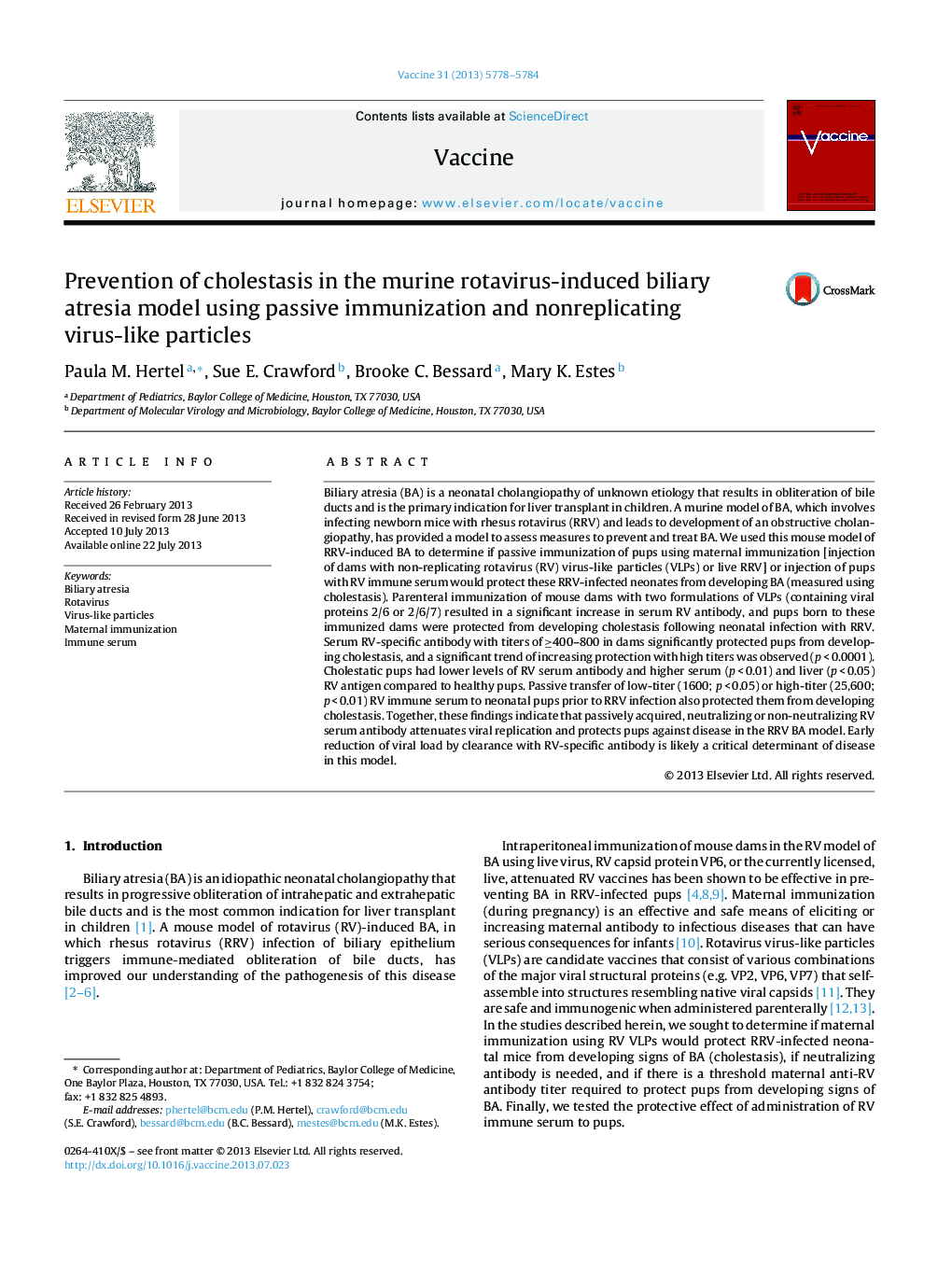| کد مقاله | کد نشریه | سال انتشار | مقاله انگلیسی | نسخه تمام متن |
|---|---|---|---|---|
| 10965900 | 1102762 | 2013 | 7 صفحه PDF | دانلود رایگان |
عنوان انگلیسی مقاله ISI
Prevention of cholestasis in the murine rotavirus-induced biliary atresia model using passive immunization and nonreplicating virus-like particles
ترجمه فارسی عنوان
پیشگیری از کلستاز در مدل اتوریته صفراوی ناشی از روتاویروس موش با استفاده از واکسیناسیون غیر فعال و ذرات ناسازگار از ویروس
دانلود مقاله + سفارش ترجمه
دانلود مقاله ISI انگلیسی
رایگان برای ایرانیان
کلمات کلیدی
آترزی صفراوی، روتا ویروس، ذرات ویروس مانند، ایمن سازی مادران، سرم ایمنی،
موضوعات مرتبط
علوم زیستی و بیوفناوری
ایمنی شناسی و میکروب شناسی
ایمونولوژی
چکیده انگلیسی
Biliary atresia (BA) is a neonatal cholangiopathy of unknown etiology that results in obliteration of bile ducts and is the primary indication for liver transplant in children. A murine model of BA, which involves infecting newborn mice with rhesus rotavirus (RRV) and leads to development of an obstructive cholangiopathy, has provided a model to assess measures to prevent and treat BA. We used this mouse model of RRV-induced BA to determine if passive immunization of pups using maternal immunization [injection of dams with non-replicating rotavirus (RV) virus-like particles (VLPs) or live RRV] or injection of pups with RV immune serum would protect these RRV-infected neonates from developing BA (measured using cholestasis). Parenteral immunization of mouse dams with two formulations of VLPs (containing viral proteins 2/6 or 2/6/7) resulted in a significant increase in serum RV antibody, and pups born to these immunized dams were protected from developing cholestasis following neonatal infection with RRV. Serum RV-specific antibody with titers of â¥400-800 in dams significantly protected pups from developing cholestasis, and a significant trend of increasing protection with high titers was observed (p < 0.0001). Cholestatic pups had lower levels of RV serum antibody and higher serum (p < 0.01) and liver (p < 0.05) RV antigen compared to healthy pups. Passive transfer of low-titer (1600; p < 0.05) or high-titer (25,600; p < 0.01) RV immune serum to neonatal pups prior to RRV infection also protected them from developing cholestasis. Together, these findings indicate that passively acquired, neutralizing or non-neutralizing RV serum antibody attenuates viral replication and protects pups against disease in the RRV BA model. Early reduction of viral load by clearance with RV-specific antibody is likely a critical determinant of disease in this model.
ناشر
Database: Elsevier - ScienceDirect (ساینس دایرکت)
Journal: Vaccine - Volume 31, Issue 48, 19 November 2013, Pages 5778-5784
Journal: Vaccine - Volume 31, Issue 48, 19 November 2013, Pages 5778-5784
نویسندگان
Paula M. Hertel, Sue E. Crawford, Brooke C. Bessard, Mary K. Estes,
